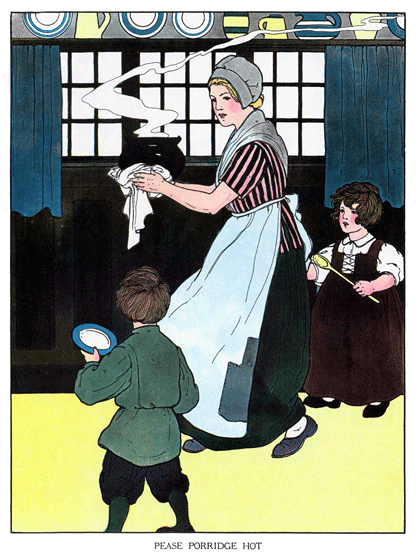
These moves help reinforce steady beat and are a perfect introduction to basic clapping game moves.Īnd repeat until the song is done. Students will do the pattern on repeat to the beat while the rhyme is sung or chanted. Likely there are many more, but most sources agree with these two as the most common.īoth versions of this game use a partner where both partners are facing each other either standing or sitting. The game for Peas Porridge Hot is a simple clapping one. This is the sheet music version included above. The current version of this was written down in The Oxford Dictionary of Nursery Rhymes in 1952. No melody was notated, and it’s unknown if it was sung or sing-chanted at the time.Īs the centuries have gone by, music teachers have added a melody based on what students and people have sung/chanted.

Of course, the original nursery rhyme was just that: a rhyme. In the original, the second stanza is different. The sound of pease and peas is the same, so over time, it adapted to be just peas. Multiple bowls of peace were called peasant. In Middle English, the mass singular form of pea is pease.įor help understanding this, think about the word “oatmeal.” You have a bowl of oatmeal which contains many oats.Ī group of peas or a bowl of peas (from the modern version) was called a bowl of pease. The song originally comes from Middle English. There are three main differences to point out. Unlike most nursery rhymes and folk songs from hundreds of years ago, this one has remained almost perfectly intact.

This does indicate the rhyme is likely older than this. The earliest mention of the rhyme is in Mother Goose’s Melody by John Newbery in 1761. The exact origins of the song are unclear. Origin: Mother Goose’s Melody by John Newbery, 1761. Rhythms: Paired eighth notes, quarter rest, quarter note Pitches: Do, mi, sol (if using the melodic version)

But my littles, especially preschool and Kindergarten, love it.



 0 kommentar(er)
0 kommentar(er)
